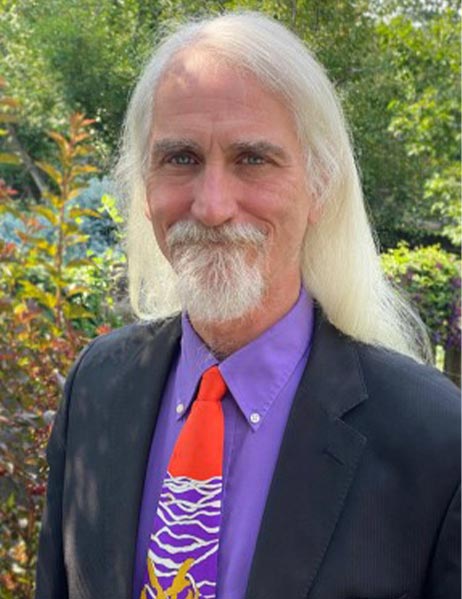Scott Montgomery

Scott Montgomery
Art History
Expertise:
Medieval & Renaissance Art, Poster Art Of The 1960s
Available for in-person lectures in:
Denver
Available via Zoom?
No
To book Scott, e-mail:
dan@hudakonhollywood.com
Scott B Montgomery is Professor of Art History at the University of Denver, where he teaches classes on Medieval art, Renaissance art, and the art of the 1960s poster movement. His books include Saint Ursula and the Eleven Thousand Virgins of Cologne. Relics, Reliquaries and the Visual Culture of Group Sanctity in Late Medieval Europe (Whitney: Peter Lang Press, 2009) and Casting Our Own Shadows: Recreating the Medieval Pilgrimage to Santiago de Compostela (co-authored with Alice A. Bauer) (New Orleans: University Press of the South, 2012). He has published numerous articles on saints in medieval art, pilgrimage, relics and reliquaries, and 1960s psychedelic poster art. His award winning documentary film, The Tale of the Dog (produced with Dan Obarski) was released in 2020.
Lectures include:
The Sistine Chapel
This presentation examines the decorative scheme of the Sistine Chapel, beginning with its wall cycle in the 1480s and focusing primarily on Michelangelo’s completion of the ceiling in 1508-12. The iconographic plan of the entire chapel’s decoration will be considered, as will changes in Michelangelo’s painting style as the project progressed.
The Family Dog Denver: A Cultural History of Denver in the late 1960s
This presentation discusses the history of the Family Dog Denver through the posters created for it in 1967-68. This short-lived rock and roll club in south Denver was the epicenter of watershed changes in culture, music, and art. Using the posters as our guides, this presentation traces the musical, artistic, and cultural legacy of the Family Dog Denver.
The Tale of the Dog: Movie Screening and Q+A with the Directors
This event begins with the screening of The Tale of the Dog – a 100-minute documentary on the Family Dog Denver, produced by Scott B. Montgomery and Dan Obarski. The award-winning film tells the story of the Family Dog Denver – a rock club in Denver – that operated as the hub of hippie counterculture activity in 1967-68. The screening will be followed by a Question and Answer discussion with the two directors/producers.
Seed to Flower: The San Francisco Psychedelic Poster Movement - Part 1 (1965-67)
Florence and its Patron Saints in the Age of Dante
Mosaics Of Ravenna
This presentation surveys some of the major mosaic cycles of the 5th and 6th century in Ravenna, Italy. The imagery and style of these mosaic cycles will be considered in their historical contexts. Mosaics examined include those in the Mausoleum of Galla Placidia, San Vitale, Sant’ Appollinaire Nuovo, and Sant’ Appollinaire in Classe.
Hieronymus Bosch and the Mirror of Humanity
This presentation examines the work of Hieronymus Bosch (circa 1450-1516) as a pivotal figure in the transition to early Modernity in painting. Bosch’s keen observation of humanity and often humorous commentary on our foibles, coupled with his fantastic visionary qualities, make him one of the most beloved artists of the visionary tradition. Strongly moralizing, though full of humorous reflection upon our human nature, Bosch’s work continues to fascinate audiences.
Are you ready to bring Hudak On Hollywood to your community?
Please e-mail dan@hudakonhollywood.com for additional information. We look forward to hearing from you!
